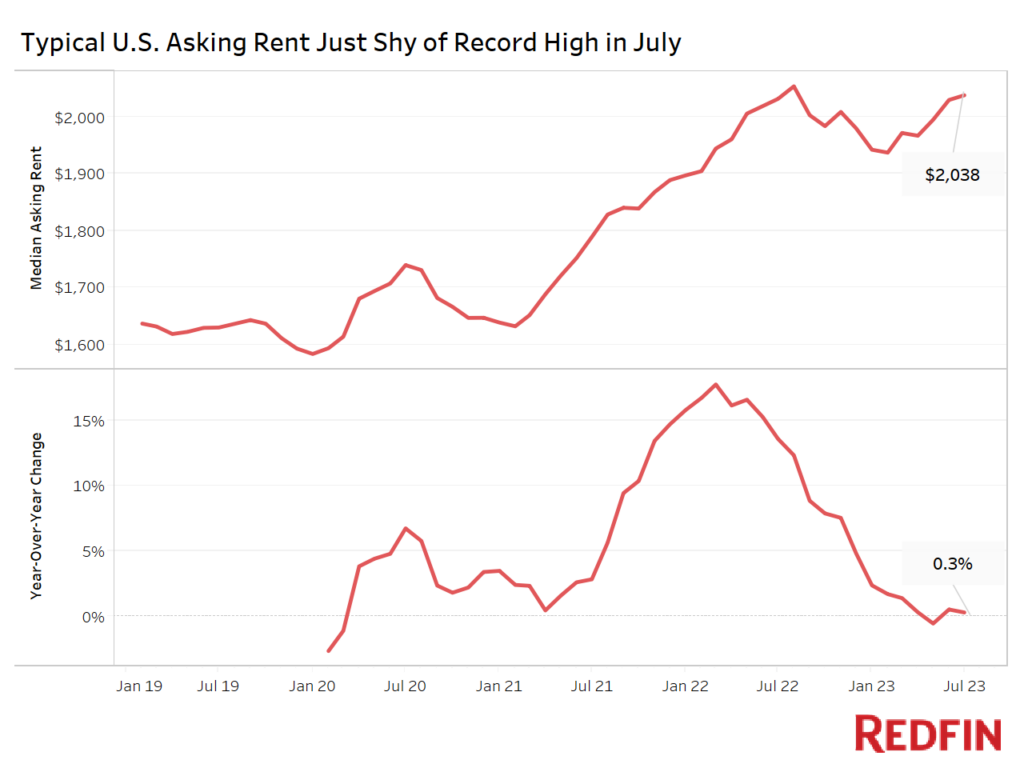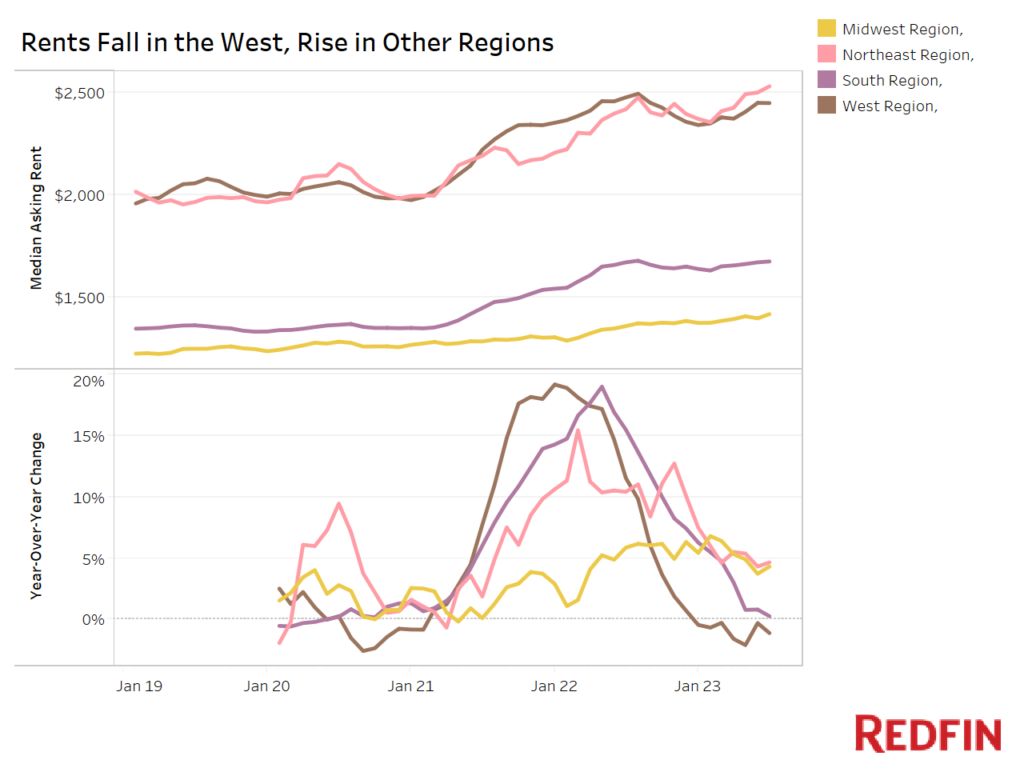As many Americans continue to grapple with the increased cost of living, the median U.S. asking rent in July was $2,038, just $16 below the record high set in August 2022, according to a new market report from Redfin.
While rents are are nearing their all-time high, overall rent growth remains sluggish, according to Redfin Deputy Chief Economist Taylor Marr.
“While rents are flattening out, it’s too early to say whether rent growth has bottomed,” said Marr. “A strong job market, cooling inflation and increasing consumer spending—which have decreased the likelihood of a recession—point to resilient renter demand. But there are still a lot of newly built apartments that have yet to hit the market, meaning rents may still have room to fall as landlords grapple with rising vacancies.”
The report revealed the median asking rent was up just 0.3% from a year earlier in July, compared with a 13.6% annual gain in July 2022.

New data showed rent gains cooled over the past year due to an increase in supply, economic uncertainty and slowing household formation, but big bargains are still often hard to come by given rents are near record highs.
The median asking rent is near its record high because the housing market tends to be “downside sticky,” meaning prices don’t typically fall substantially even when business is slow, Marr said.
The number of options renters have to choose from has steadily climbed over the past decade. Completed residential projects in buildings with five or more units rose 26.3% year over year to 476,000 on a seasonally adjusted basis in June—the most recent month for which data is available—meaning landlords have more vacancies to fill and less leeway to raise prices.
The report showed there are signs that the nationwide homebuilding boom is easing. The number of permitted residential projects in buildings with five or more units fell 33.4% year-over-year to 465,000 on a seasonally-adjusted basis in June, representing the biggest drop since 2016.
Rents Fall in the West, Rise in the Midwest and Northeast
In the West, the median asking rent fell 1.1% year-over-year to $2,451 in July. And in the South, it rose 0.3% to $1,674—the smallest increase recorded since 2020. Asking rents rose 4.6% to a record $2,533 in the Northeast and climbed 4.3% to a record $1,416 in the Midwest.

The rental market has cooled quickly in the West and South in part because those markets saw outsized rent increases during the pandemic. Rents skyrocketed as people flooded into Sun Belt cities including Phoenix, Miami, and Dallas.
Now, rents in those regions have relatively more room to fall—especially as renters increasingly find themselves priced out of certain cities. The West has also been disproportionately impacted by layoffs in the tech sector, which may be contributing to its soft rental market.
To read the full report, including more data, charts, and methodology, click here.

 DSNews The homepage of the servicing industry
DSNews The homepage of the servicing industry









